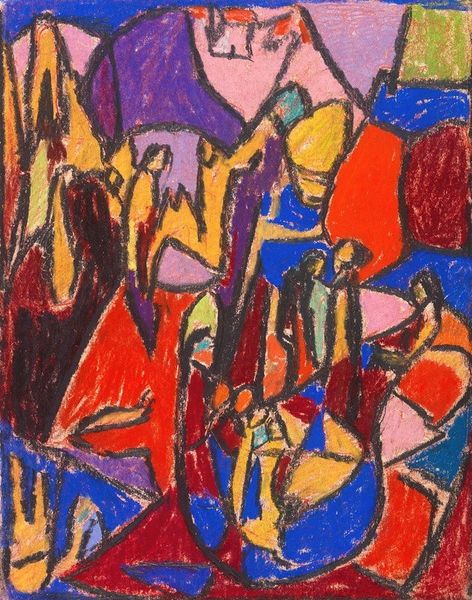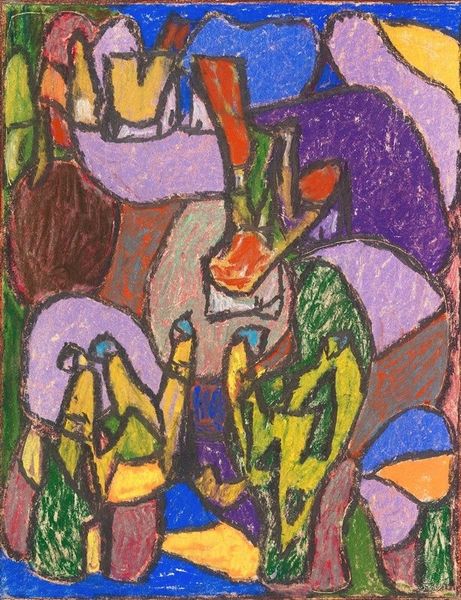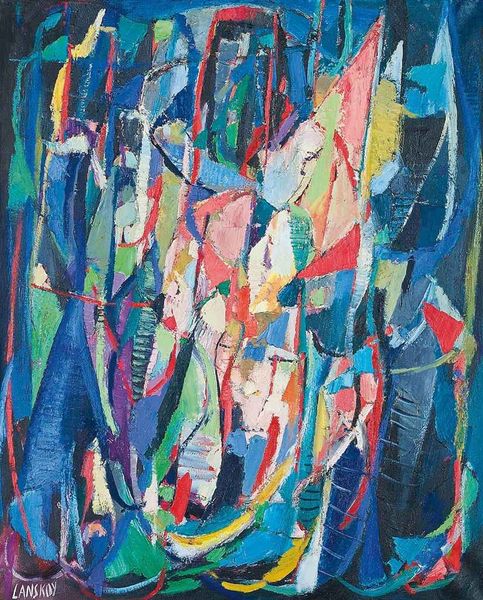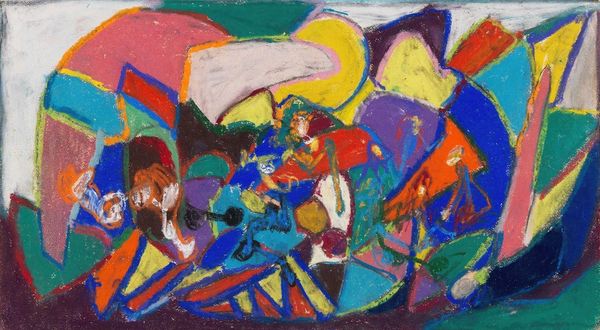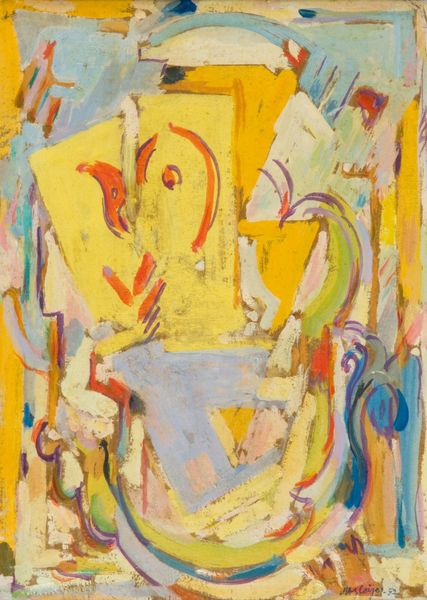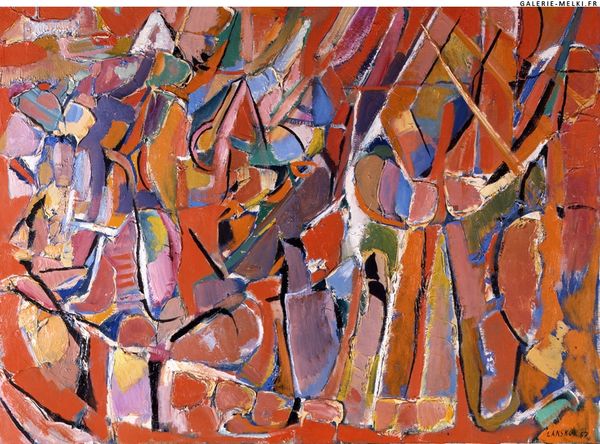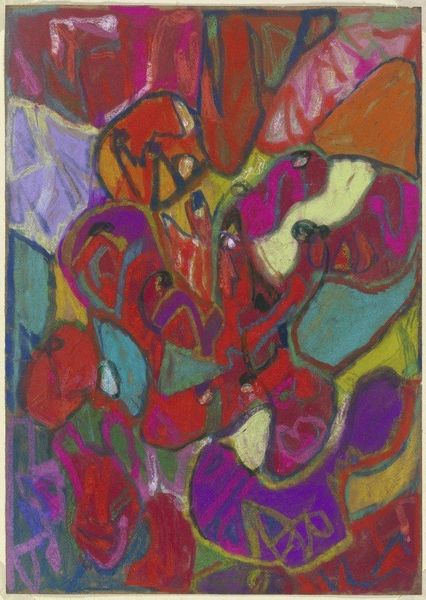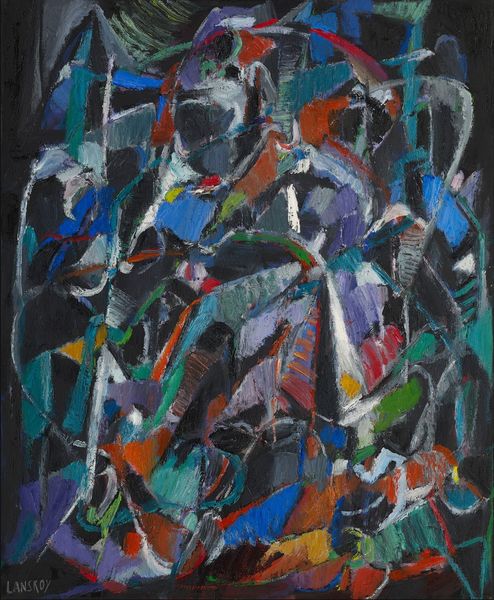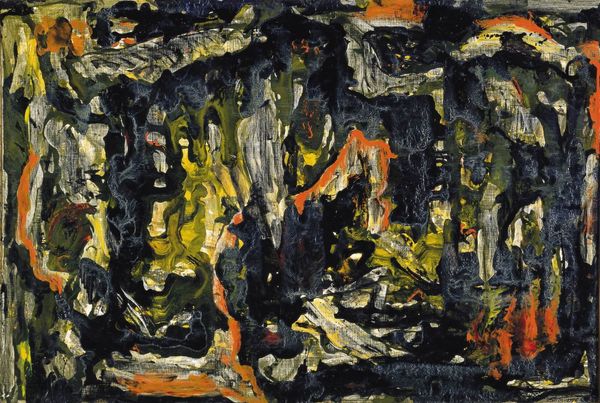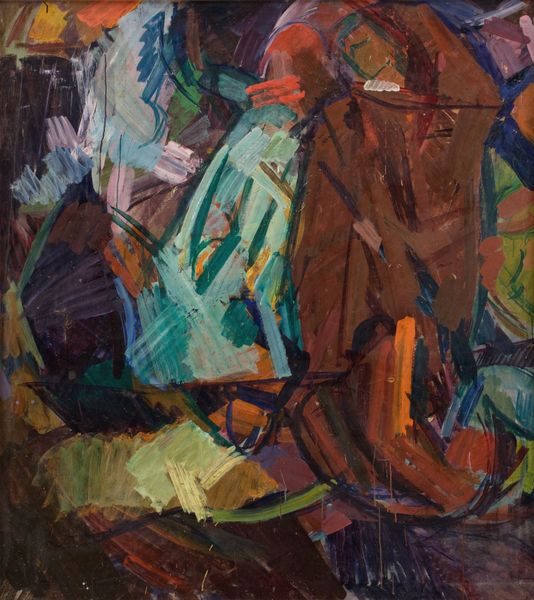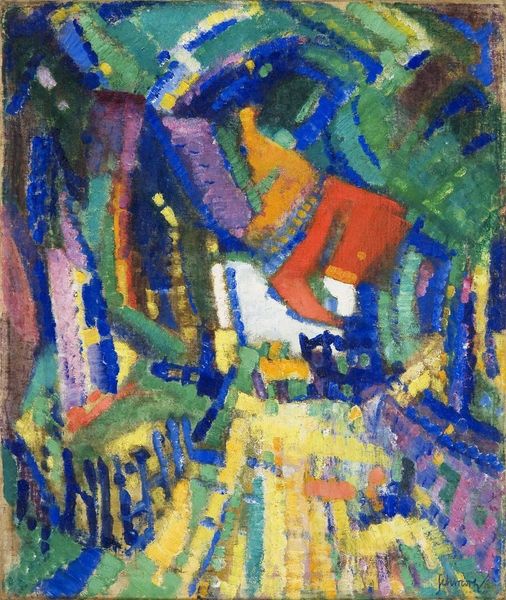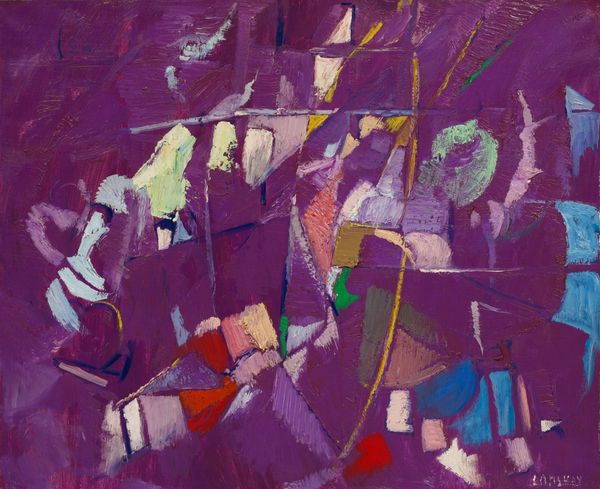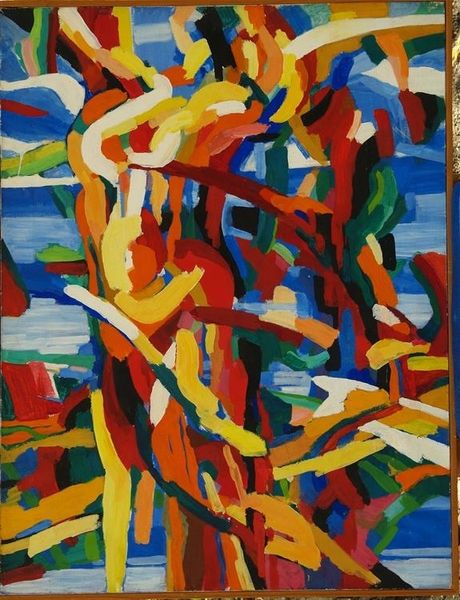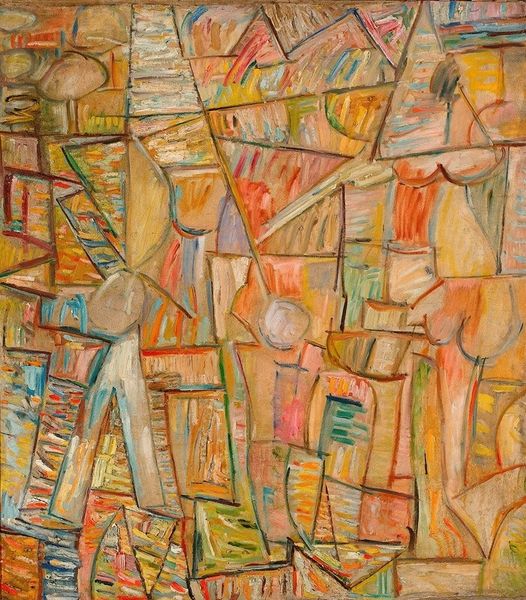
Copyright: Public Domain: Artvee
Curator: "Belebte Landschaft," or "Animated Landscape," painted by Adolf Hölzel around 1925, seems like a vibrant exploration of color and form. It’s mixed media, right? Editor: That’s correct, yes. I find it so visually energetic, almost chaotic, yet the longer I look, the more I see the structure holding it together. What do you see in this piece, Professor? Curator: Well, I see a potent rejection of traditional landscape painting and a challenge to bourgeois norms of representation. Hölzel, through his participation in the development of modernism in Germany, consciously disrupts conventional aesthetic values. Look at how he employs fauvist and expressionist techniques. How does that communicate defiance to you? Editor: The use of arbitrary color, definitely! The landscape is no longer about mirroring nature, but about expressing subjective experience and possibly, rebellion. The geometric forms feel… almost violent in their angularity. Curator: Precisely! Hölzel was interested in synesthesia. Do you think the colours reflect sounds he associated with nature or other political themes? The piece acts as a statement against the staid academic art that preceded it and also maybe hinting the upcoming societal disruption of the 20's? What do you think of that potential historical association? Editor: I hadn’t considered that, but it’s really intriguing. It does lend another layer to the "animated" aspect of the landscape—a sense of social unrest bubbling beneath the surface. Curator: Art isn’t created in a vacuum. And looking at this work through a lens that accounts for its historical and socio-political context enriches our understanding. Editor: It definitely makes me appreciate the painting on a deeper level. Thanks so much, Professor. Curator: My pleasure. Always remember, art is as much about what it *says* as it is about what it *shows*.
Comments
No comments
Be the first to comment and join the conversation on the ultimate creative platform.
